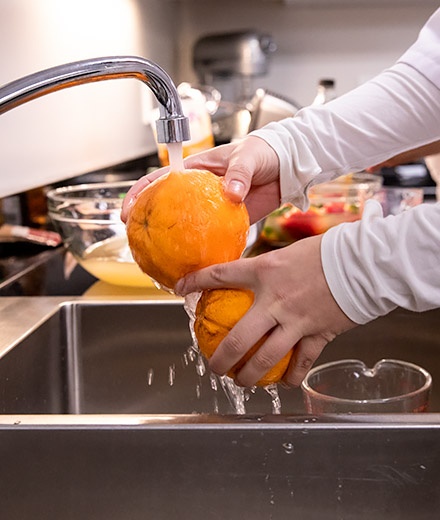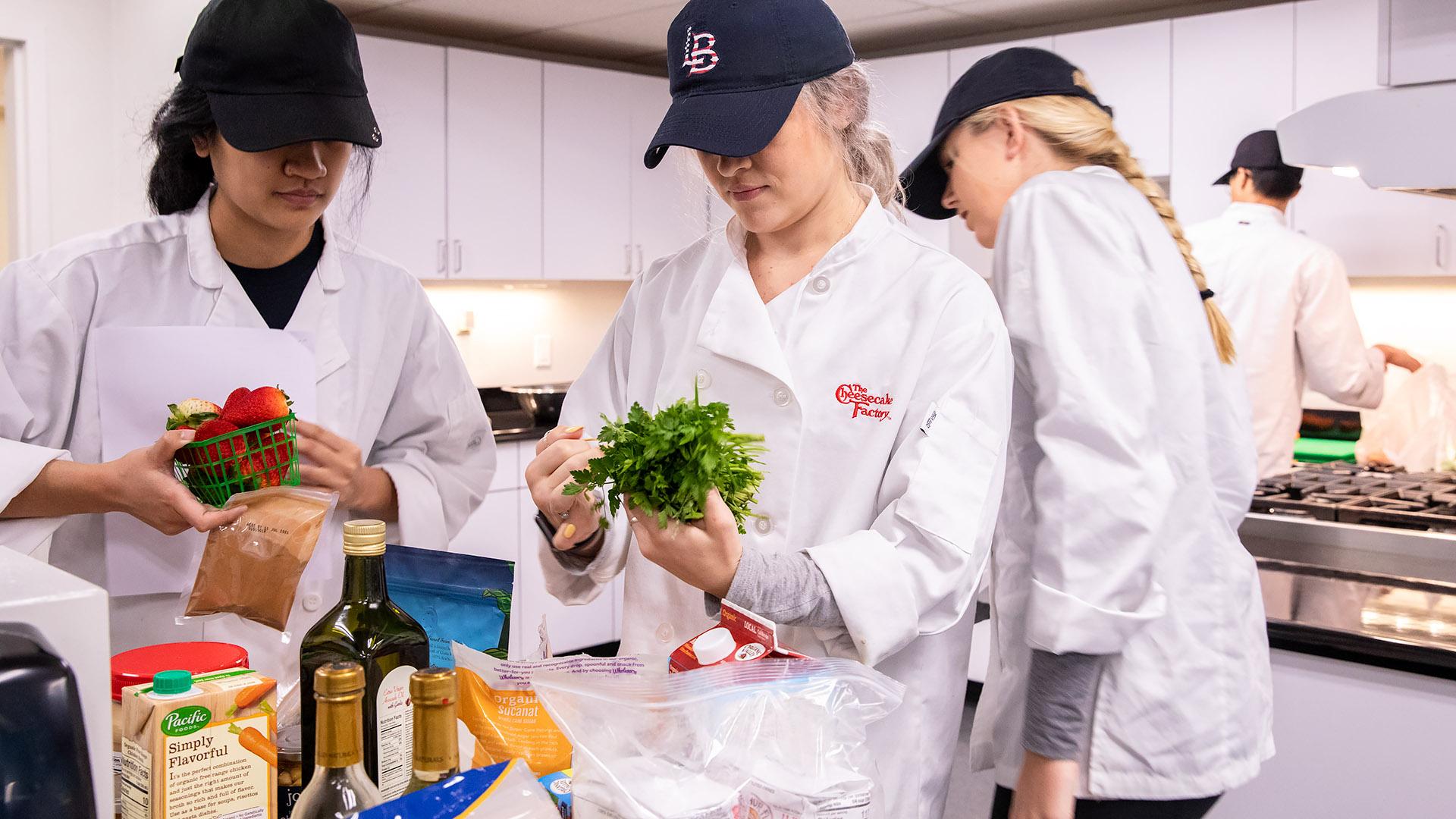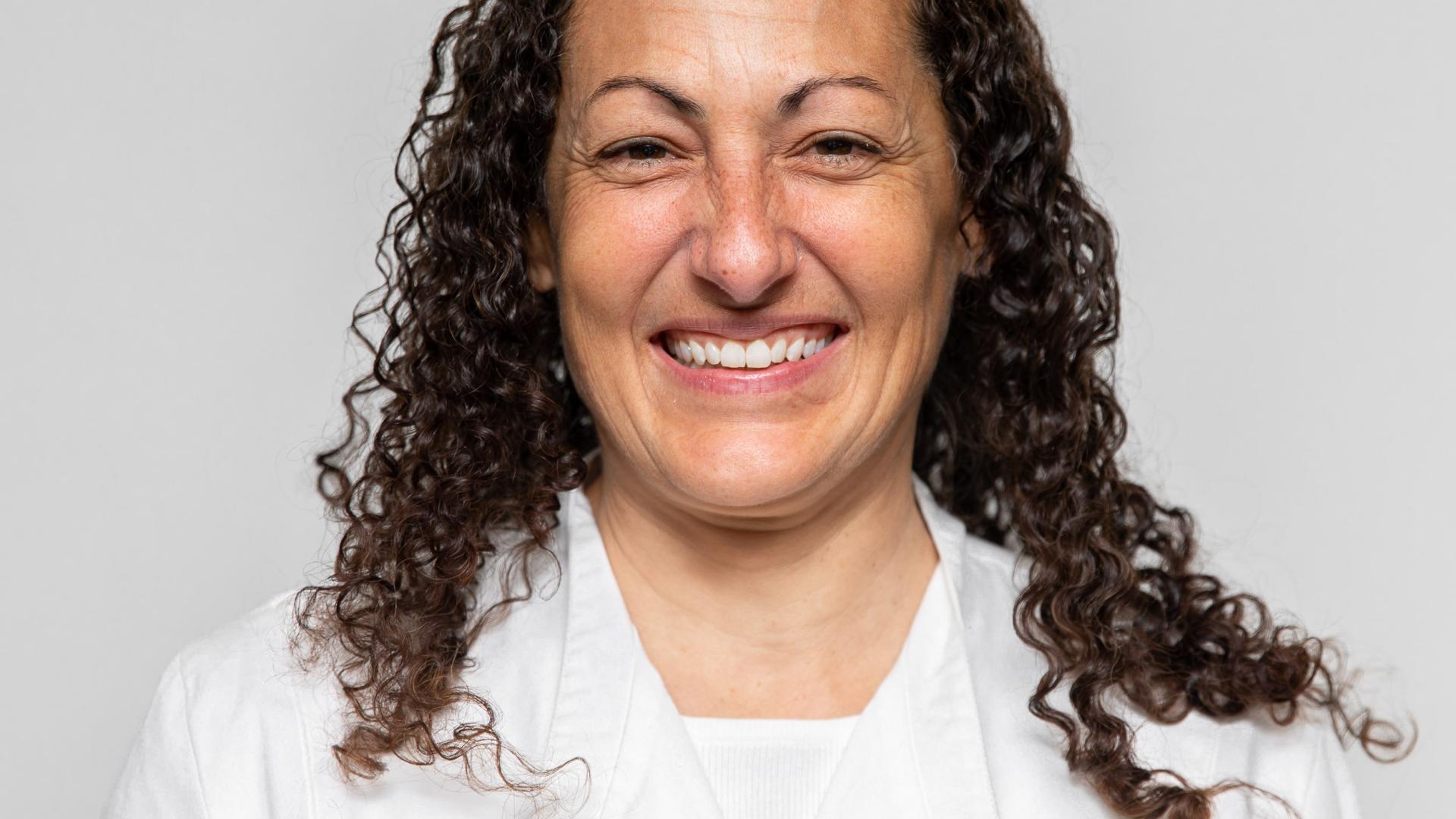Chef Libby Gustin teaches healthy cooking and eating
A cart, loaded with culinary riches from oranges and lemons, whole wheat couscous and organic varieties of avocado oil, apple cider vinegar and apricot spread, provided a physical and savory testament to the kinds of lessons Libby Gustin teaches her students.
Gustin, associate professor of hospitality management, is an advocate for sustainable food preparation, whether she’s teaching aspiring restaurant owners, or people who want to know more about cooking their own healthier cuisine.
Students in Gustin’s “Food Production and Service Hospitality Management” class chose sustainable ingredients from the food cart to make dishes such as Moroccan couscous, parsnip and carrot puree and Moroccan meskouta orange cake.

“Sustainably sourced means that is free of chemicals, pesticides and GMOs. That is growing in a system that is regenerating itself,” she said.
Targeting sustainably sourced ingredients means chefs must search out farmers’ markets and avoid standard suppliers, such as grocery stores. That also requires chefs need to make sure produce is safe to eat, Gustin said. The upside to the having to do more work is a more nutritious and better-tasting meal.
“We have to go the farmers market instead of grocery stores, because the produce is more fresh, which means it’s healthier, too” student Janelle Antonio said.
Students Juan Gallo and Ethan Mai, working on parsnip and carrot puree, both said they do their shopping at farmers markets.
“Everything is sweet, vine-ripened. It’s all real good there,” said Mai, who plans to open a restaurant.
The students in Gustin’s class spent their time in the Food Lab testing recipes they plan to serve on a grander scale during a special meal for industry pros and campus guests.
Hospitality Management is an increasingly popular degree choice at Long Beach State. The campus awarded 71 such degrees during the 2017-18 academic year.
Gustin also taught “Buy, Cook, Eat Sustainable Food,” a class offered through the campus chapter of the Osher Lifelong Learning Institute during its winter session. It encourages healthy eating by means of “Color Your Plate,” which challenges people to eat a variety of fruits and vegetables by selecting ingredients from the five color groups on a daily basis.
The groups:
- Red (tomatoes, beets, strawberries, watermelon)
- Orange and yellow (carrots, sweet potatoes, papaya, lemons)
- Green (spinach, asparagus, green apples, avocadoes)
- Blue and purple (eggplant, purple cabbage, plums, raisins)
- White (onions, mushrooms, white nectarines, pears)
Diners can monitor their progress by coloring a section of the rainbow each time they eat a fruit or vegetable of the right color. Gustin’s rainbow has more spaces set aside for green fruits and vegetables since those foods often contain water-soluble vitamins that need to be replenished.
Different color groups can correlate with particular nutrients, Gustin said. Red foods can be high in vitamin A, whereas purple produce can be good sources of antioxidants.
“It’s an easy way to get all the nutrients you need in your weekly diet,” she said.








